I use lotion. You use lotion. Pretty much everyone uses lotion. It's a good thing to have as part of your skincare routine, right? Well, yes! And no.
As with so many things related to skincare, lotion can be a double-edged sword. Do it right and you equip your skin with everything it needs to stay healthy and looking great. Do it wrong and you expose your body to an excessive amount of questionable, dangerous, and downright toxic chemicals. Here's everything your doctor didn't tell you about the dangers of lotion.
Meet Your Skin
So let's talk skin. Your skin, to be exact,. What may look like an even, single layer of skin over your body is in fact made up of three layers: the epidermis (top layer), the dermis (middle layer), and the hypodermis (lower layer). Your skin needs a lot of things to stay healthy, but moisture is one of the most important. Well-moisturized skin is smooth, soft, and supple. Poorly moisturized skin is cracked, flaky, and dry.

Turns out, your body knows what it's doing. It has a pretty good system for delivering moisture through your skin layers. Intricate networks of blood vessels deliver moisture through your hypodermis to your dermis. Once there, the moisture makes its way outwards through your dermis. Finally, it evaporates into the atmosphere.
It's a Dry, Dry World
In a perfect world, this process gives you well-balanced skin that doesn't feel dry or itchy. But let's face it: we're not living in a perfect world. There are many things that can dry out your skin. How many of these influences do you recognize?
- Age: Young skin is more effective at keeping moisture in. The older we get, the fewer molecules we have that trap water in our skin.
- Genetics: Some skin is more prone to be dry than others. Certain forms of eczema can lead to chronic skin dryness.
- Cold Air: Dry, cold winter air speeds up skin drying. Dry air pulls more moisture from your skin than humid air, which is why dryness often happens in the colder months.
- Sun Exposure: Sun exposure also speeds up the rate of evaporation. Use a sunblock regularly to reduce your exposure.
- Soap: Harsh soaps strip your skin of natural oils which help keep it hydrated. Excessive hand washing, or hand washing with a low-quality soap, can lead to dry, cracked hands.
Why Lotion Can Be Your Friend
The world is intent on drying out your skin. The right lotion can put that moisture right back. Even so, the dangers of lotion could be lurking within the benefits. (More on that in a bit.)
Your lotion has two main goals: to replenish water in your epidermis and to keep that moisture from leaving your skin again. Some moisturizers do both. Some only do one or the other.
Moisturizers fall into one of three broad categories:
- Occlusives: Occulsives go old school, and not necessarily in a good way. They use oils, waxes, and silicones to form a solid layer over your skin that traps in water. Sure, this stops evaporation, but it also leaves you sticky and messy.
- Emollients: Unlike occlusives, which sit on the top of your skin, emollients penetrate your epidermis. In some cases, this can be a good thing. Emollients produce skin that is smooth, supple, and well-moisturized. However, they can also carry less than helpful ingredients directly into your body. Not good.
- Humectants: Humectants are like emollients in reverse. Instead of keeping water in your skin, humectants attract water from the outside air and draw it into your body. Again, you have to use caution here: the wrong lotion will allow dangerous chemicals easy access to your body.
A Lot of Lotion Goes a Long Way
When you apply lotion, you apply a lot of it. That's simply because skin has a lot of surface area. Whatever is in your lotion gets a lot of opportunities to work its way into your system. Products like shampoo, chapstick, or deodorant are generally only exposed to a small part of your body. While you still want to be careful with these products, they have a limited opportunity to expose you to problematic ingredients. But lotion? Hoo boy. Anything that comes in your lotion has ample opportunity to build up in mass quantities.
And that's the crux and danger of the lotion issue. It's common sense to apply lotion regularly, especially when you have dry skin. But it's not as common to think about what's actually in the lotion you're using. Not all lotions are created equal. Some use poor quality ingredients. Some use ingredients that in the long run actually dry your skin out further. You end up using more lotion in response, which further increases your exposure. This cycle continues until you switch to a better quality product or give up on your skin entirely.
And that problem doesn't even brush on the dangerous ingredients common in low-quality lotions.
Potential Dangers of Lotion
Do you know what may be lurking in the skincare aisle? There's no end to the low-quality junk you'll find in many conventional moisturizing lotions. You don't want any of these ingredients coming in contact with your skin, especially in the quantities that occur when you apply lotion.
Mineral Oil
Mineral oil is one of the most commonly used ingredients in the skincare industry. It's pretty easy to see why: it's cheap and it's easy to get your hands on. It's a distilled form of petroleum that has a very long shelf life. In theory, this means it's an entirely different product than other grades of petroleum. In practice, it's only as pure as the process used to purify it. If the process is not undertaken correctly, you end up with extremely dangerous byproducts.

In most cases, the products you see on the shelves contain well-purified, cosmetic-grade mineral oil. Okay. But take the highest grade mineral oil possible and what do you have? A cheap occlusive emollient that is only good for holding moisture near your skin. When you opt for a product based mostly on this ingredient, you're opting out of more beneficial natural alternatives. You're opting out of antioxidants and nutrients. You're opting out of products produced with sustainability in mind. All you get is plain, cheap, mineral oil.
What else comes in basic, low-cost products? Lots of other dangerous ingredients (a few of which we'll discuss in more detail below). Because mineral oil is so good at keeping water near your skin, it's also good at locking in all those other dangerous chemicals. Even if the mineral oil itself isn't causing harm, it creates a playground for other less advantageous ingredients.
(Note: Mineral oil products also cause real damage if aspirated. See more on this in the scholarly article produced by Dr. Michael Weinstein)
Parabens
If you spend much time on this blog, you've heard us go off on parabens before. So we'll keep it brief here: parabens are cheap preservatives that can cause a lot of issues when they build up in your body. They're often found in low-quality lotions. Stay away from them if you value your health.
You can learn more about parabens (and two other nasty ingredients) in our recent blog here.
Polyethylene Glycols (PEGs)
Another potential danger of lotion is Polyethylene Glycols (or PEGs) which is an ingredient derived from petroleum. Manufacturers love them because they can be used in so many ways. They help soften and lubricate the skin, they keep products from separating as they sit on the shelf, and they help active ingredients absorb better into your skin.
If you think back to what we said about mineral oil, you'll probably notice an issue with this right away. If PEGs help "good" active ingredients penetrate your skin, they're also going to help less beneficial chemicals get in there too. And since PEGs are common in lower quality products, it's likely they're paired up with some pretty nasty stuff.
And, speaking of nasty stuff, have you heard of 1,4 dioxane? It's a human carcinogen that's exceptionally good at working its way into your bloodstream. It's also a known contaminant found in PEGs. Does your bottle of lotion have 1,4 dioxane in it? No way to tell for sure, but if the label lists PEGs there's a chance it might.
Retinyl Palmitate
Retinyl Palmitate is a derivative of Vitamin A that often gets added to lotions and sunscreens. It supposedly has anti-aging properties. This may be true, but it's also true that it's been connected to nasty side effects. A 2012 study by the National Toxicology Program took a look at the impact of retinyl palmitate and sun exposure. The study found an increase in tumor growth when retinyl palmitate and sunlight are mixed.
Tumor growth? Honestly, I'd take wrinkles over that, thanks. But it's not like we have to make that choice. There are plenty of safe, natural alternatives to danger lotions with retinyl palmitate out there. And that's an important point: you don't have to choose between healthy skin and avoiding dangerous ingredients. There are ways you can get the most of both.
Fragrance
Ah, yes. Fragrance. This is another one you're familiar with if you spend a lot of time with our blog. Here's the short version: manufacturers can use the word "fragrance" to stand in for thousands of different chemicals. If you see it on your lotion bottle, you have no idea what you're actually putting on your body.
Again, the fact that you use a lot of lotion with each use is a problem here. Not only can you smell the fragrance from lotion, so can everyone else. People with sensitivities to fragrances can have adverse reactions from the lotion you happen to be wearing. So, not only you but others are exposed to the dangers of lotion as well.
Opt for lotions that are fragrance and perfume free, not just "unscented."
Conventional Lotion Alternatives
It's time to say goodbye to the dangers of lotions—full of cheap, toxic ingredients. Make the change to natural lotions full of ingredients your skin will love.
Look out for lotions that do the following:
Keep it Simple
Look: moisturizing doesn't have to be complicated. Yes, there are times when additional ingredients are called for. We'll talk about that in a bit. But honestly, single-ingredient solutions can go a long way.

Take aloe vera, for example. It's naturally full of antioxidants (great for your skin), and it's an excellent way to give your skin some natural moisture. Simply spread a thin layer on your face and allow it to soak in. Apply regularly for soft, smooth, and luminous skin.
Look for Alternatives
You don't need chemicals that are specifically created to retain moisture. Many natural ingredients are already well-suited to provide high quality hydration.
If you're looking for a hydrating anti-aging face cream, keep an eye out for ingredients like aloe vera juice, coconut oil, jojoba seed oil, and shea butter. All of these ingredients hydrate naturally without the nasty side effects of other less palatable moisturizers.
Work from the Outside In
There's a lot more to skin moisture than just the products you use. Your body has some natural processes that help keep your skin well hydrated. This is especially true for your face. Working with your body instead of onit can bring out the most of these processes.

Your face is a shining example of this. Your skin naturally produces oil that helps keep hydration in balance. Choose natural oil control moisturizers to support your body in finding balance in oil production.
And don't forget: your body's hydration is directly related to your skin! Make sure you're drinking plenty of water throughout the day to reduce your need for moisturizing lotion altogether.
It's Okay to Be Picky
What you put on your skin directly impacts how your body functions. Don't settle for anything less than the best. Think about the potential dangers of lotion when shopping to make sure your skin stays safe and your body keeps healthy.
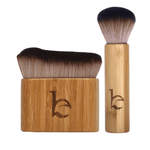
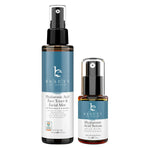






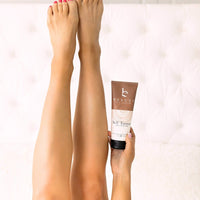








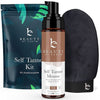

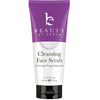


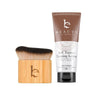









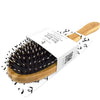
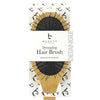
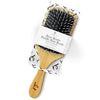

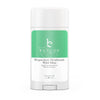



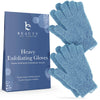
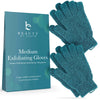
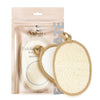
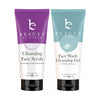










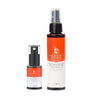




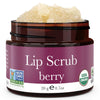
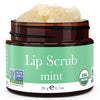
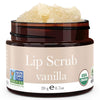





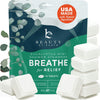
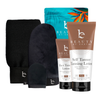
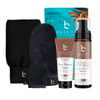











join the conversation